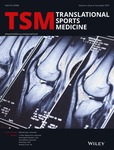Injury epidemiology and preparedness in powerlifting at the Rio 2016 Paralympic Games: An analysis of 1410 athlete-days
Funding information
This study was approved and supported by the International Paralympic Committee. The authors have not received support or benefits from commercial sources for the work reported.
Abstract
Purpose
To describe injury epidemiology in Para powerlifters during the Rio 2016 Paralympic Games.
Methods
This cohort study was a sub-analysis of the web-based injury and illness surveillance system survey (WEB-IISS) carried out by the International Paralympic Committee (IPC) Medical Committee. The WEB-IISS survey was completed daily by the Chief Medical Officers of each National Paralympic Committee (NPC). Main outcome measures were injury incidence rate (IR; number of injuries per 1000 athlete-days), injury incidence proportion (IP; number of injuries per 100 athletes), and injury incidence rate ratio (IRR; the ratio between the calculated IRs). After the competition, a survey assessed the available clinical resources of each NPC.
Results
A total of 180 athletes participated in the time period; injuries for 141 athletes with their own medical support were recorded during the 10-day period, accounting for 1410 athlete-competition days of exposure. Overall IR was 15.6/1000 athlete-days (95% CI; 9.61-21.59). Most injuries were from chronic overuse (63.6%). The most commonly injured anatomical region was the shoulder (45.5%; IR = 7.09). There were no significant differences in injury patterns between male and female powerlifters (IRR = 0.78 [95% CI; 0.36-1.69], P-value = .699). The oldest age group (35-75) had the highest injury incidence rate (IR = 21.8 [95% CI; 12.63-30.96]). There was no significant difference in IP among lighter compared with heavier athletes. Of 34 NPCs, the majority of federations (91.6%-95.8%) felt their powerlifters have access to sports medicine doctors or sports medicine-trained clinicians who could implement and/or direct injury prevention protocols.
Conclusions
The information obtained in this study supports the need for injury prevention protocol development in this high-risk Para sport.




